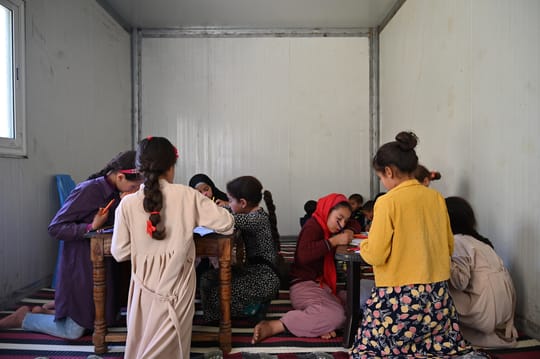Women in rural Morocco face educational barriers which hinders development.
The literacy rate for women in Morocco is around 54%. In contrast, the literacy rate for men is around 75%. This difference is due to the lack of educational opportunities extended to women, especially in rural areas where around 90% of women are illiterate. In rural areas, 39% of women attended classes from the age of 15-17, while in urban areas over 90% of women attend school. This raises the question as to why women in rural areas are so much less likely to continue on into high school.
Rural areas are much more likely to have early marriages. Having an early marriage would inhibit a young girl from continuing with her schooling. It is approximated that 16% of Moroccan girls marry before the age of 18. While the legal age is technically 18 in Morocco, there are loopholes which allow marriages earlier. It is estimated that 98% of early marriage requests come from rural areas. This highlights the cultural divide between rural and urban communities. Since women in urban areas are marrying later, they have the ability to finish school.
There are also safety concerns from parents with daughters in rural areas. Moroccan families, especially in more conservative rural areas, typically have higher expectations around security for their daughters than sons. This fear and need for constant vigilance makes families hesitant to send girls away to school once they age out of primary school. This is heightened in rural areas because there is not usually a secondary school close enough to the village for girls to return home in the evenings, while in urban settings this is more feasible.
Girls in rural areas are also more likely to be exploited for child labor. Girls are often seen as a way to earn another source of income, which can be seen as a necessity for those in poverty. Those that are forced to do child labor are usually from rural areas and female. Young girls after work as domestic workers in homes, where they encounter verbal and physical abuse. Out of those who experience child labor, over 80% drop out of school. Even if girls are not being sent to new homes to earn an income, there are other cases of child labor, which do not earn an income. The biggest example of this, which prevents girls from going to school, is the use of young girls to do domestic chores and their mothers run the household. Girls are needed to clean the home, fetch water from outside the village, prepare food, and care for other children.
Part of the reason young girls are forced to do labor instead of receiving an education is ignorance around potential benefits of educating one’s daughter. An educated daughter increases the likelihood she has a better social status in the future and have healthier future families. It increases the probability she will have financial literacy and independence, which decreases the odds she will be trapped in an abusive relationship. It also increases literacy, which greatly increases quality of life. Literacy opens up new opportunities for women, which they would not otherwise have available to them. It is associated with higher pay, decreases the chances women must take informal jobs lacking benefits and proper pay, and increases the likelihood they participate politically.
Girls deserve to have the same opportunities as their male counterparts. Having access to education improves their quality of life and later opportunities. However, the positive impacts of high female literacy rates does not stop there. Higher female literacy rates are associated with lower poverty rates and economic stimulation. It also increases sustainable development. In fact, UNESCO has highlighted female literacy as a major component critical for sustainable world development. This is a goal that has been prioritized by the Moroccan government, His Majesty King Mohammed VI, and other major international organizations.
In order to achieve further development, Morocco must begin to target growth and education for all of its citizens. This includes addressing barriers to education for women in rural areas. Until women in rural areas have access to education development will be impeded and economic growth will be dampened. There have been past initiatives to help combat low literacy rates in the country, but there is still much to be done. There is a cultural perception of women and how they are viewed, particularly in rural areas, which acts as a barrier for women to attend school. Until cultural perceptions, new legal requirements, and improved livelihoods for school attendance occur, there will be generations of young girls who are never given the opportunity to learn how to read and write. This will slow down development and increase the likelihood young girls will experience adverse life outcomes.
